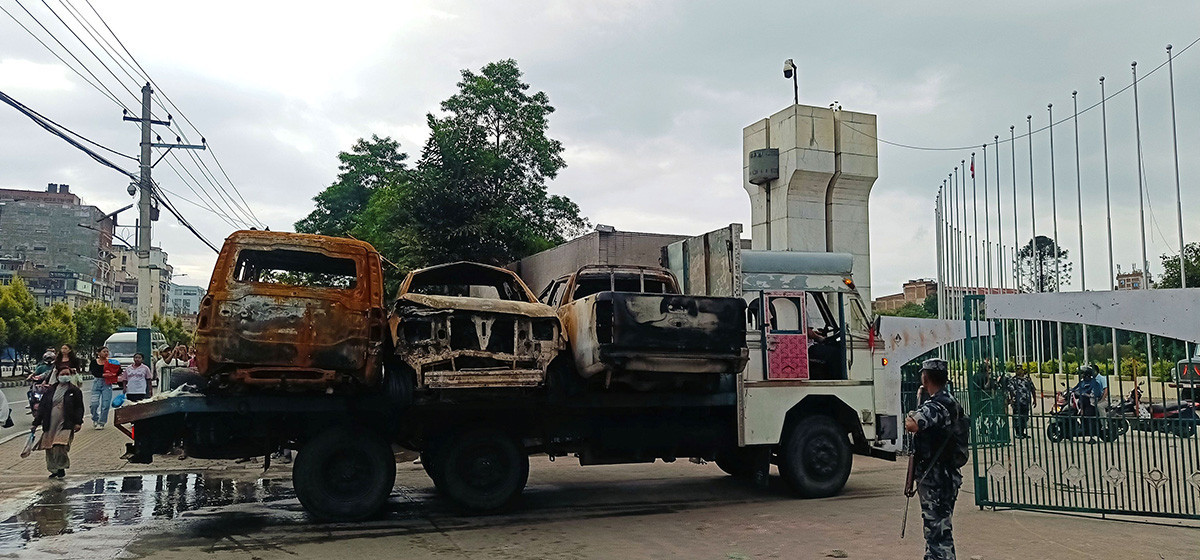Originally constructed in the 12th century, the temple was renovated by King Bhupatendra Malla of Bhaktapur in 1629 BS (Bikram Sambat). It covers an area of around 20 ropanis and is believed to be the head of the Shri Kedarnath Temple at Uttarakhand in India.[break]
With a big Shiva Linga (phallus) inside the temple, it is also known as Sipare and Bimaleshwor.
Photo: The Week
According to the Hindu mythology, the five Pandava brothers had received the blessing of going to heaven whenever they desired. After the 18-day battle of Kurukshetra, fought between the Pandava brothers and their 100 Kaurava first cousins, and as described in the epic of Mahabharat, the victorious Pandavas renounced their reclaimed kingdom and headed towards heaven.
However, before leaving, they wanted to ask for forgiveness to Lord Shiva for the loss of lives during the battle. So they went to Kedarnath in Uttarakhand of India where Lord Shiva was believed to be residing.
When Lord Shiva heard about the Pandavas coming to seek his blessings and forgiveness, he took the shape of a buffalo bull in order to avoid them.
The Pandavas soon realized that the buffalo bull itself was Lord Shiva. So Bhima, the strong second Pandava brother, tried to stop it from running away by pulling on its tail during the course of which the head hid itself in the ground and the Pandavas could not locate it.
Then out of nowhere, they heard Lord Shiva’s voice telling them to go to the land of the Himalaya to seek his blessings and forgiveness, as the head of the buffalo bull would be there. It is said that the Pandavas then came to Doleshwor where they were blessed by Lord Shiva, as promised.
The humpbacked structure at Uttarakhand’s Kedarnath Temple is worshipped as the torso of the holy bull, and the head is believed to be at the Doleshwor Mahadev Temple of Bhaktapur.
The connection between Kedarnath and Doleshwor Mahadev is also mentioned on the inscriptions at Doleshwor Mahadev Temple premises.
The sculptures of Shiva found in both the shrines are assumed to be 4,000 years old and both temples have a cluster of five shrines. Even a stone scripture found at Doleshwor Mahadev is written in Kannada, a language presently evident in south India.
In 2009, the head priest at Kedarnath announced Doleshwor Mahadev to be the head of Kedarnath.
For many years, devotees thought Pashupatinath was the head of Kedarnath but no connections were ever found between the two. Also, Kedarnath is believed to be 4,000 years old while the history of Pashupatinath is much older, as Pashupatinath is called Aadi Jyotirlinga, which means it is present from the beginning of the Earth.
Even in the recent devastating floods and landslides in Uttarakhand, the Kedarnath Temple remained untouched. It is believed that as long as the head exists, the body shall remain. The worshiping that was interrupted at the Kedarnath Temple in India due to the recent natural calamities has been resumed at Doleshwor Mahadev in Bhaktapur of Nepal, and the regular rituals performed at Kedarnath are now being carried out here.
The temple used to witness a large number of devotees during the Shivaratri festival, and especially during the month of Shrawan. But after the fact that Doleshwor Mahadev is part of Kedarnath was made public, the pilgrimage has increased even more tremendously.
If one wants to visit this revered temple, go to Jagatee near Surya Binayak at Bhaktapur. The Doleshwor Mahadev Temple lies four kilometers south from there.
The road from Jagatee onwards is narrow, muddy and dusty and hence completely unsuitable for vehicles. However, hiking your way to the temple can be a perfect weekend activity.
rajunepal@myrepublica.com
Month-long festival kicks off at Doleshwor, Ashapuri Mahadev te...


































